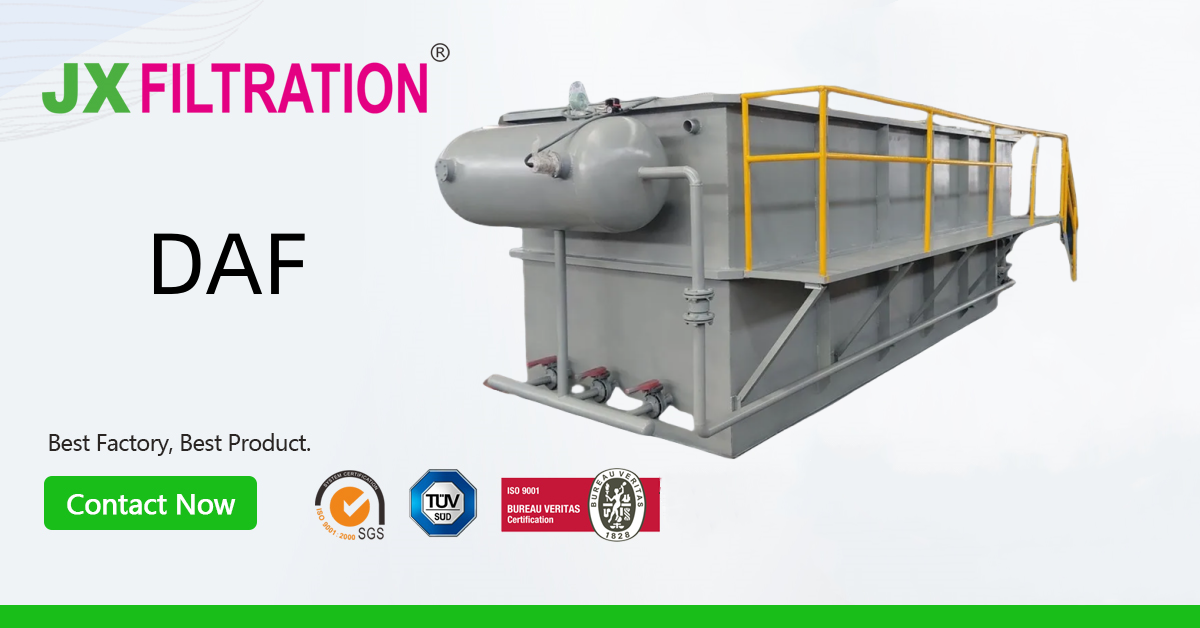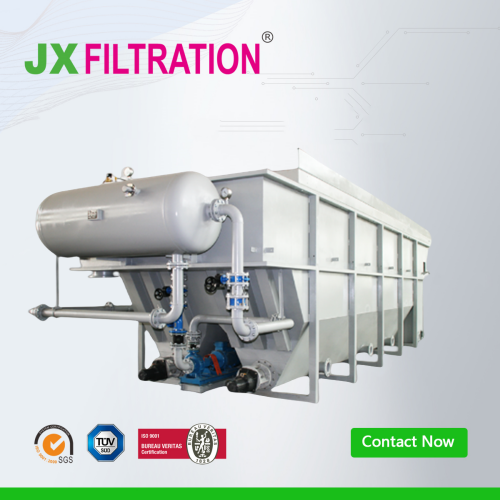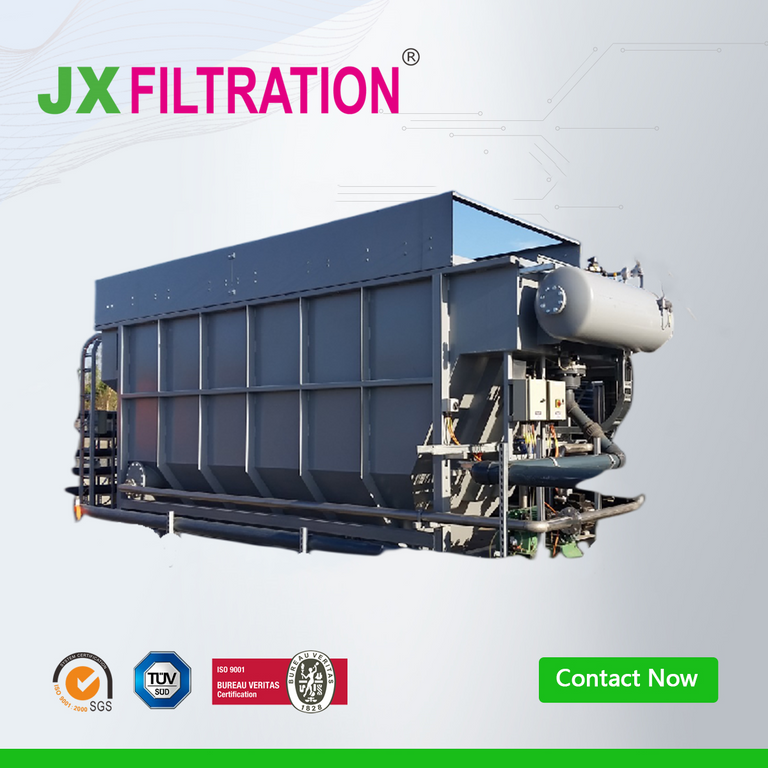Dissolved Air Flotation System
Wastewater generated by industrial activities must undergo treatment before being discharged into the local sanitary network, returned to the natural environment, or reused. The diversity of industrial wastewater requires different types of treatment and systems. Dissolved Air Flotation (DAF) wastewater treatment systems are one of the most commonly used processes in water treatment and one of the most versatile, as they can be applied to industrial and municipal wastewater treatment, seawater desalination, and water reuse. DAF systems achieve high performance in removing solids, oils, and related organic matter, with removal rates exceeding 90%.

What is a DAF System?
A DAF system is equipment designed to separate solid particles, fats, and oils, intended to clarify wastewater (industrial and municipal) or regulate surface water or seawater for subsequent treatment and reuse. The equipment separates solids, fats, and oils from water, producing high-concentration sludge. Additionally, they can significantly reduce Chemical Oxygen Demand (COD) and Biological Oxygen Demand (BOD).
How Does this Water Treatment System Work?
Aeration is necessary for effective separation of solids, oils, fats, and flocs in wastewater. Wastewater is drawn from the coagulation-flocculation system: the system before the DAF unit, where doses of coagulants, polyelectrolytes, and pH adjustment products are administered to effectively form flocs. DAF systems are specifically designed to treat water containing solids that require large surface areas for flotation and separation and do not have enough buoyancy to float. Additionally, when the presence of emulsions, oil, and solid mixtures affects the specific gravity of particles, flotation air is needed to improve flotation.
Recirculation pumps redirect a portion of the clarified water leaving the DAF unit back to the pressurized saturation system. Recirculated water is pumped to approximately 6 bar and mixed with pressurized air. Under these pressure conditions, air dissolves in the water. Inside the DAF unit, a pressure drop occurs, resulting in the generation of micro air bubbles. Dissolved micro air bubbles allow for the removal of solids and flocs that do not have enough buoyancy. The bubble diameter is between 30-50 microns, which is the basic size for effective flotation. Bubbles quickly adhere to similar and larger particles and rise to the surface.
The mixture of water and bubbles is evenly distributed in the inlet chamber of the DAF unit under laminar conditions, and floating particles are redirected directly to the dehydration system at the top of the unit, where they are eliminated through a specially designed skimming system. Settleable matter descends to the sedimentation chamber at the bottom of the DAF unit and is discharged by the sludge extraction system. Clarified water exits the unit via an adjustable clear liquid system. A portion of this clarified water flow is redirected by the recirculation pump to enter the aforementioned pressurized saturation system.
The system uses clean water extracted from the well, free of solids, allowing the generation of micro air bubbles, which float to the surface from the injection system. DAF technology, coupled with properly researched coagulation-flocculation and pH adjustment dosages, has been proven to remove fats, oils, suspended solids, turbidity, color, bacteria, algae, iron, manganese, phosphorus, and Total Organic Carbon.
Any Requirements, Contact Us Now!
Kris
Email/Teams: kris@filtrationchina.com
Mobile/Whatsapp/Wechat: +86 18980776200


